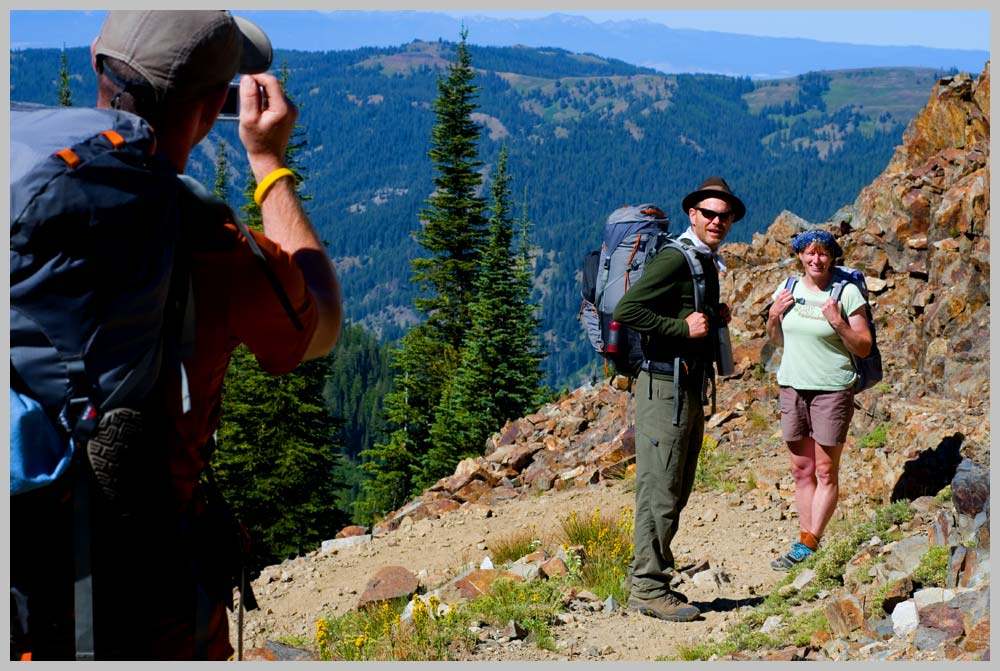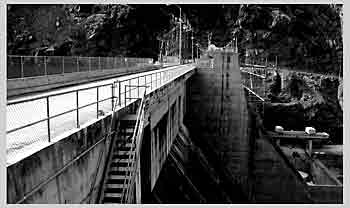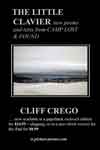ON THE FRAGMENTATION OF NATURAL
WATER CYCLES
The spring gives freely of its water,
but only in freedom can we drink.
Let me begin by saying that I don’t really know first hand what a truly
large-scale natural water cycle is like, because I have never lived for
a sustained period of time in a culture wholly nested within one. At
the same time, I do know and have extensive experience with what a
natural water cycle is not. And let it be said from the outset, that I do
not like what I see, both in the parts of the European Alps that I know
well, and in those areas of the Northwest that I am presently exploring.
I do not like this recurrent pattern of the radical fragmentation of natu-
ral water cycles: break the flow; dam the river; fill the reservoir; divert
vast quantities of water for frequently questionable, wasteful ends.
Perhaps most importantly, I simply do not like the folly of attempting
to control what is not really understood. The rich and chaotic complex-
ity of the natural water cycle has been treated as if it were as neat and
orderly and precise as a Swiss train. And now, only some fifty years
after the great boom time of mega-dams, everywhere the negative
side-effects of the extraordinary hubris of this philosophy of control
are building up before our eyes like piles of unpaid bills.
The facts are unequivocal. In the Reuss / Rhein watershed of the Alps,
where I’ve worked for many years intensively, the salmon stopped run-
ning in 1958; And now, by some very strange twist of fate, the part of
the great Columbia watershed in which I’m now focusing much of my
attention—the South Wallowas—the salmon also stopped running that
same year: 1958. Those are facts.
But in a far more subtle and tragic way, some vast, essentially unknow-
able, natural movement has been lost; it has stopped turning, as it were,
as if a heavy wrench were thrown into the delicate spokes of a finely
tuned wheel.
So the movement of the cycle fragments, breaks up into essentially out-
of-phase, partial, disharmonious, smaller half-cycles. The result is that
the entire life-community that depends on this rhythmic flow of a water-
shed as a whole begins to suffer—one species at a time—begins to pull
back, decline, dry up, and, finally, vanish. “Vanish” is not, I believe,
an exaggeration here. In both areas mentioned above—the central Alps
and the South Wallowas—there are at present no real recovery plans for
salmon, which means that they are effectively being erased from con-
sciousness.
How has this happened? Well, I would say because of highly confused
meaning.
The basic question is, “What is a river?” Is it something like a vein or
artery of the living Earth? Or is a river more like a water pipe or sewer,
with precise, measureable properties? These questions of meaning and
perspective are more basic than the facts of objective needs, like water
for irrigation, power generation or human consumption, as important as
these might be.
Why? First, because natural limit always trumps cultural need.
If water managers say, for example, that they need for a town of 5,000
two million liters of water a day, and the basin provides only one mil-
lion, well, the “needs” will just have to change. Full stop.
Second, it is meaning that shapes this all-important perception of natural
limit, just as meaning in turn is shaped by a culture’s primary formative
images or metaphors. If we think of water as money, for example, then
it is clearly a waste of capital to let water just flow out to sea without
making it work for us. So, just like money, we put water in “banks,”
by building reservoirs and dams. And, just as with money, we act as
if there is no natural limit: more is always better.
* * *
THE CRUCIAL FLAW—
contradictions are non-sustainable
The crucial flaw, I would argue, in this water-is-money style of thinking—
its essential contradiction—is that there’s no compound interest when
it comes to water, nothing like the money-begetting-more-money of
for example a 5% loan that hedges against doubling its cash in a mere
16 years, and that essentially out of thin air! Water behind a dam, it is true,
does build up for a time, but its quality rapidly degenerates, and the knot-
ting up of the natural flow invariably sets off a cascade of contradic-
tions throughout the wider water-based web of life. Here are a
few of these which immediately come to mind:
(0) The water silts up behind the dam;
(1) water temperatures rise as vital oxygen levels decrease;
(2) the thermal weight of such large bodies of static water
may set-off a microclimate forcing, raising ambient temperatures enough to melt snowpack on the higher peaks before that snowmelt is needed,
(3) or cause more precipitation to fall as rain instead of snow;
(4) agricultural pollution is no longer periodically flushed out of the system;
(5) the complex nested rhythms and dynamic balances of the ebb and flood of the water-year are broken;
(6) the macro flows of essential nutrients from mountain
forest to the sea and back again are destroyed.
These are just a few of the facts, not in my view as it is euphemistically
put, of “concern,” but rather, of collapse.
* * *
COLLAPSE & CONTRADICTION
Contradiction—or how the all-important limits of Nature
and the artifacts of Culture ‘speak or fight against one another’—has
two key features:
First, it points to weaknesses in our way of thinking, or philosophy
opportunities for discovery; And second, contradictions are always non-
sustainable. That is, opposing movements grind against each other until
the wheels of the system at some point simply fall off.
This means that, regardless of how we think about them, where there is contradiction there will be collapse.
It is up to us—and this is the problem’s ethical dimension I think—to use
the best of our science to 'untie the knots,' so to speak, in an intelligent
and measured way, or else be swept away in a highly unpleasant flood
ofmostly unforeseen negative consequences.
[Photo: Hells Canyon Dam, on the Snake River. Completed 1967, 100 m. high,
with 391 MW capacity. Like the other two dams of the Hells Canyon Project, it
lacks passage for migrating salmon, blocking movement to Shosone Falls.]
.
ON THE FRAGMENTATION OF
NATURAL WATER CYCLES is part of
THE LITTLE CLAVIER please preview 150 of 631 pages
w/ my black & white photography [opens in new window]
Let me know what you think!




